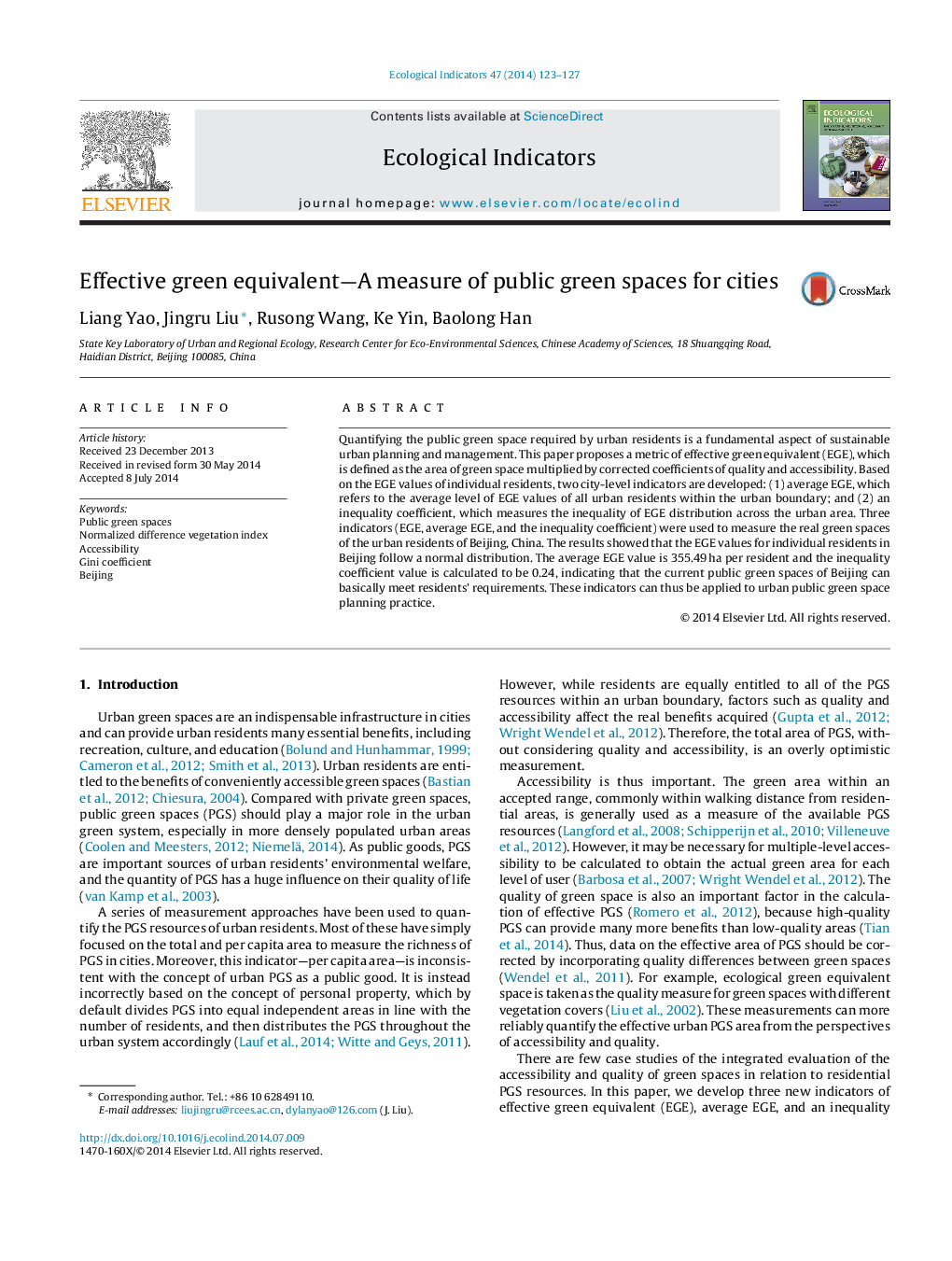| Article ID | Journal | Published Year | Pages | File Type |
|---|---|---|---|---|
| 4373021 | Ecological Indicators | 2014 | 5 Pages |
Quantifying the public green space required by urban residents is a fundamental aspect of sustainable urban planning and management. This paper proposes a metric of effective green equivalent (EGE), which is defined as the area of green space multiplied by corrected coefficients of quality and accessibility. Based on the EGE values of individual residents, two city-level indicators are developed: (1) average EGE, which refers to the average level of EGE values of all urban residents within the urban boundary; and (2) an inequality coefficient, which measures the inequality of EGE distribution across the urban area. Three indicators (EGE, average EGE, and the inequality coefficient) were used to measure the real green spaces of the urban residents of Beijing, China. The results showed that the EGE values for individual residents in Beijing follow a normal distribution. The average EGE value is 355.49 ha per resident and the inequality coefficient value is calculated to be 0.24, indicating that the current public green spaces of Beijing can basically meet residents’ requirements. These indicators can thus be applied to urban public green space planning practice.
